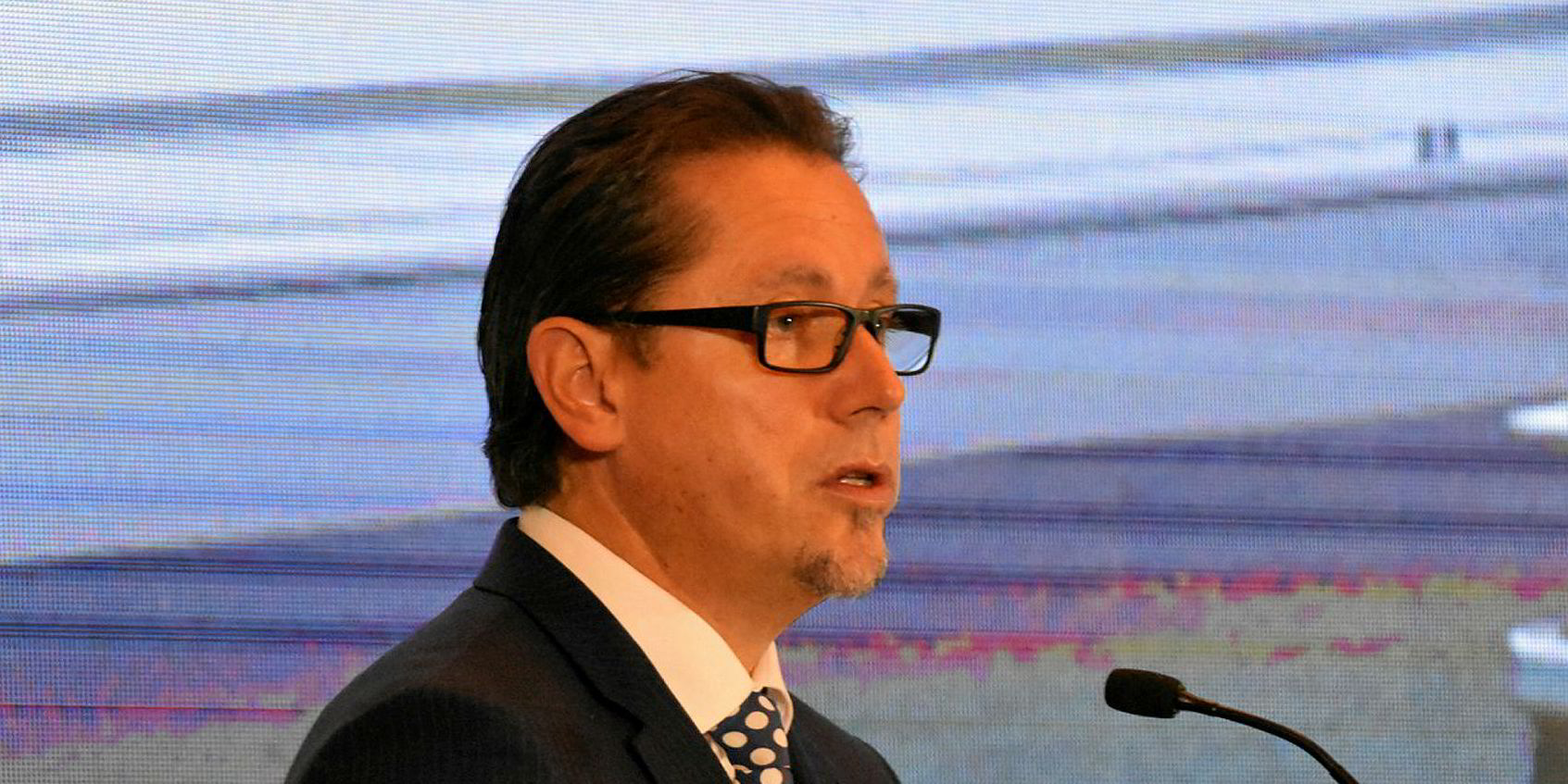Oslo-based classification society DNV GL has high hopes for maritime transport when it comes to tackling climate change.
In its annual energy outlook, DNV GL predicts carbon-neutral fuels will have to account for 30% to 40% of the bunker fuel mix and conventional LNG 41% to 70%, if the IMO is to meet its greenhouse gas (GHG) targets of cutting emissions by half of 2008 levels by 2050.
Switching to those cleaner fuels will go a long way in helping to keep the increase in global average temperatures to below 2C within this century — a goal laid out in the Paris Agreement on climate change that is essential for future human welfare, according to researchers.
By contrast, DNV GL expects oil will still account for more than half of the global aviation energy mix in 2050. This is despite the International Air Transport Association calling for a cap on net aviation emissions from 2020.
Ambition
So why such bold ambitions for an industry that is still running on the dirtiest type of oil product available today?
Speaking to TradeWinds, leading DNV GL executives said the momentum to decarbonise marine energy has been increasing since the IMO set its goals — and a roadmap is now emerging.
The IMO is in part setting the pace. It is scheduled to usher in legally-binding measures that can reduce GHG by 2023.
“The regulations are clear enough. If you want to think of newbuildings for this point in time, you will need to think [that] the vessels need to stay on the water for 15 to 20 years,” DNV GL maritime chief executive Knut Orbeck-Nilssen said.
But the push is not only coming from regulators, according to Orbeck-Nilssen.
Charterers such as energy major Shell and mining giant BHP have incentivised shipowners to use cleaner fuels with long-term charters, while 11 of the world’s largest ship financiers have launched the Poseidon Principles pledging to adjust their portfolios in line with the 2050 target.

“And during that time frame, you will not only have to comply with the regulations but also meet demand from customers and financiers,” Orbeck-Nilssen said.
Many industry experts have pointed out that shipowners are facing a significant challenge as the low-carbon fuels required to meet the IMO target are not yet fully developed.
However, DNV GL group chief executive Remi Eriksen suggested this should not be an excuse for inaction.
“The important thing is people don’t just wait for the magic solution to come,” Eriksen said. “We believe this is a gas future. There is a pathway now — all starting with LNG or LPG.”
Step by step
Industry studies show burning LPG and LNG can only reduce CO2 emissions by 13% to 20% versus oil-based bunker fuels.
But DNV GL’s vision is that marine engines and bunkering infrastructure can be designed to allow a future switch from the two gases to other gas-based, carbon-neutral fuels such as ammonia, as the technical challenges in doing so can be overcome.
Orbeck-Nilssen said: “They use the same infrastructure. We can really leverage the infrastructure that will have been built up.”
A growing number of vessel operators have started to adopt LNG and LPG propulsion, even though gas-fuelled vessels can cost at least 10% more than conventional vessels.
Large investments include Carnival Corp’s plan for a fleet of 11 LNG-powered cruiseships and CMA CGM’s project for at least 20 dual-fuelled large-sized boxships, including nine 23,000-teu units.
With more companies using the new marine fuels, the cost of adoption will decrease over time and thus trigger even more usage, according to Orbeck-Nilssen.
External factors
However, there are various challenges that may be beyond the industry’s control.
Simply consuming carbon-neutral fuel is not sufficient to fight climate change. Many fuels emit negligible CO2 during combustion but can be highly carbon-intensive to produce and distribute unless using renewable means.
“It’s important you look at ‘well to propeller’,” Eriksen said. “[Look at] how the fuel is produced, transported and [calculate] the emissions along the way to the engines where it burns. It’s really important the world takes a holistic view.”
However, the IMO only regulates the maritime industry. The signatories of the Paris Agreement are expected to establish national frameworks to decarbonise their economies, which can reduce the carbon footprints of the whole lifecycle of marine fuels, Eriksen said.
More importantly, shipping companies will need to be able to pass the investments in decarbonisation to their customers if their businesses are to be sustainable. Some analysts suggest the public may need to accept higher shipping costs.
“You can see that outside of shipping, people are much more conscious on sustainability,” Orbeck-Nilssen said. “But there are also a lot of contradictions.”
Orbeck-Nilssen cited the generally high refund rate in online shopping as an example. Some studies show online retailers often allow buyers to return their purchased goods with no extra shipping costs to induce sales.
“That’s something good for shipping, but not good for the environment,” Orbeck-Nilssen said. “It’s easy to think about sustainability as [a broad term] than it is to think about how it affects you personally.”







